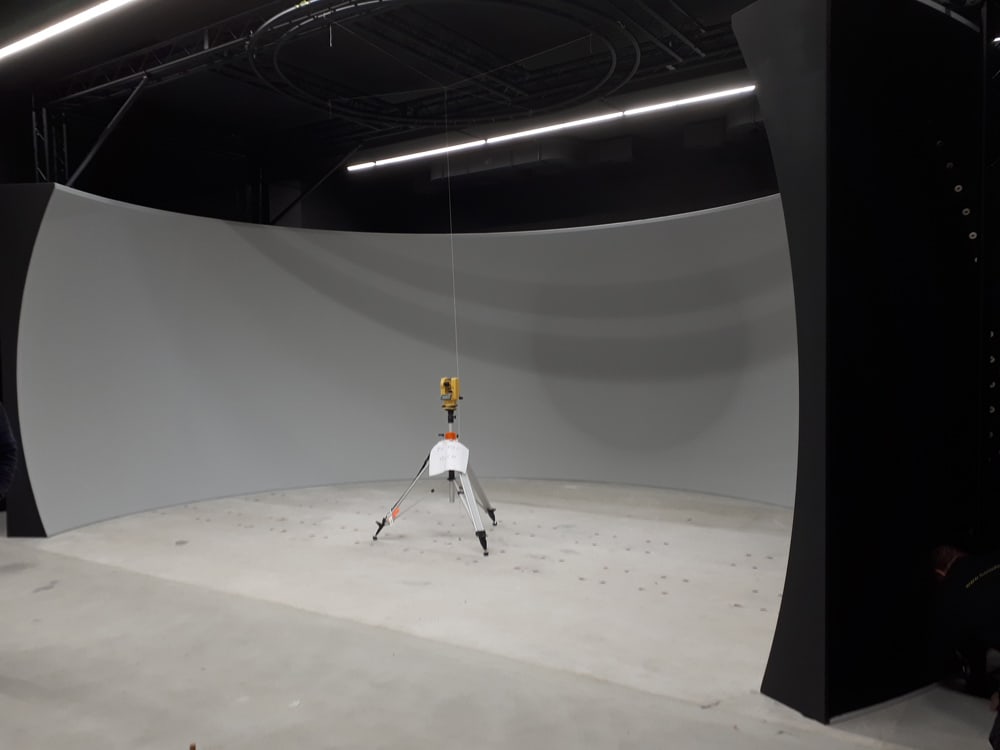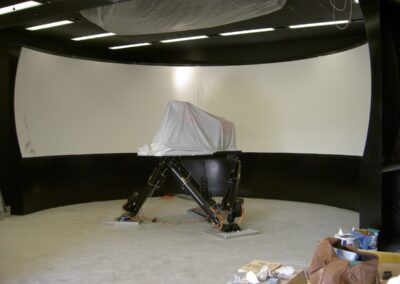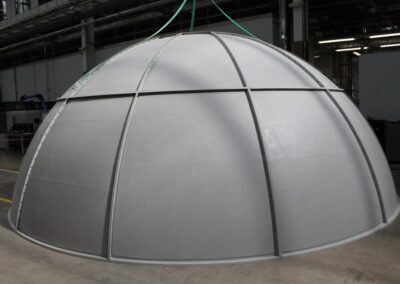GRP Simulator Screens & Domes
Custom Mouldings are renowned for our exceptional GRP simulator screen and dome manufacturing and installation services: we’re the ‘go to’ partner for organisations around the world. From London to Germany, Rome to Langkawi, our highly skilled team provides bespoke screens and domes, crafted to design specifications for an exciting client base.
What We Offer
GRP Simulator Screen Domes
We can help you create and install bespoke fibreglass simulator screens and domes for your next major event, training or leisure facility.
Our GRP simulator screen and dome solutions can be customised for:
- GRP Spherical and Cylindrical Simulator Screens
- F1 Driving Simulator Screens
- Driver training Simulator Screens
- Navy training simulator screens
- Theme Park Immersive tunnel simulator screens
- Hemispherical GRP Domes


A Guide on GRP Moulds
When customers are wanting exact copies of a product, GRP moulds are a common choice. Manufactured from durable and well-built, GRP moulds are used to produce a great number of products including PPE, Pipework, Anti-Slip surfaces and even Electronic enclosures. Below you will find everything you need to know about this versatile material so you can make an informed decision on whether this suits your intended project.
What is GRP?
What exactly is GRP? The acronym stands for Glass Reinforced Plastic and is commonly known as fibreglass or composite plastic. Falling into a category called thermoplastics, it is a versatile material chosen for a wide variety of reasons. GRP moulds are made from strands of glass which are known as fibres. These are then woven together, creating a ‘fabric’. GRP moulds are produced when these fibres are placed in or on the shape of a pattern to produce a replica of the product.
It is made from two layers – a hard-wearing gel coat and a reinforced glass fibre material (either strand matting or glass fabric). We tend to use 4 layers of the woven mat for the production of our moulds and use vinyl ester resin as it is stronger than polyester. Both the gel coat and resin for the mat are then mixed with a catalyst which starts the chemical reaction and the curing process.
Why is GRP such a widely used material?
There is an extensive number of key benefits that explain why GRP moulds are an ever-increasingly choice for companies. They are a robust and extremely durable material meaning that many units can be cast from the very same mould. They have a high strength-to-weight ratio and are resistant to both corrosion and chemical exposure. GRP is extremely easy to shape making it a very versatile material, it can be used to produce a wide variety of products and it doesn’t burn like other plastics. When moulded, it offers an extremely durable material that’s great value for money. The strong surface won’t wear which also reduces the need for repairs and maintenance which further cements its place as a cost-effective choice for various applications throughout your industry.
What are GRP moulds used for?
Writing all the possible uses for GRP would make this guide far too long as the uses for GRP are practically endless. It can be used to form part of a mould or the entire mould, depending on the qualities needed. Here are some of the most popular uses for GRP moulds which include:
- Bespoke designer furniture.
- Pizza ovens (commercial and residential).
- Separators for use with large-diameter drainage pipes.
- Commercial railway components.
- Railway platform copings.
- Shower Trays.
- Bathtubs.
- Ornamental precast.
- Spheres for pier caps.
- Boats
- Wine Storage Bins.
This is in no way a complete list as GRP is constantly being trialled and tested for different uses for various industries, allowing its key benefits to be manipulated to suit the required needs.






















